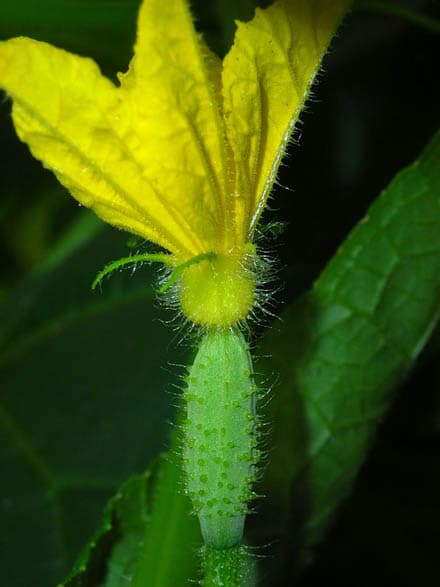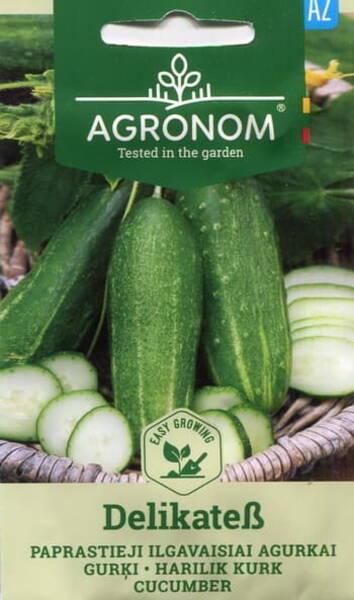Early high-yielding variety for open field cultivation. Fruit with few spines, medium size, not bitter. Can be used fresh or for canning. Grows best in non weedy, fertile soil protected from the wind.
1 g contains approximately 30-45 seeds.

* Cucumbers love warmth, light and moisture.
They react immediately to temperature fluctuations and even a slight cold snap.
Soils require alkaline, well-aerated soils with a lot of humus and nutrients. It is especially useful to fertilize the soil for cucumbers with manure.
The site for this culture should be protected from the wind and as illuminated as possible.
Cucumbers are grown by direct sowing or from seedlings. Plants obtained from direct sowing are more resistant to adverse conditions, but in cold weather the seeds germinate poorly or do not germinate at all.
As a rule, it is better to grow cucumbers from seedlings, in this case harvesting occurs earlier.
Since fertility increases with the age of the seed, it is better to sow older (3-4 year old) seeds (unlike other vegetables, cucumber seeds are bought in reserve).
Cucumbers are sown directly into open ground in early June. The seeding depth is 1.5-2 cm. The seeding rate is 0.2 g / m2. Row spacing 60-80 cm. Distance between plants - 30 cm.
For seedlings, sowing is carried out in the 1st decade of May, best of all, directly in peat-breeding or planting pots. After about 3-5 weeks, "hardened" plants can be planted either in open ground on prepared beds, or in a greenhouse, which by that time will be free after harvesting the salad.
From 2 to 6 plants are placed per 1 m2, depending on the variety.
Care consists in regular feeding and watering.
Water the cucumbers after 2-3 days with warm water. Once every 10 days, watering is combined with top dressing.
In 10 liters of water dissolve 1 liter of manure or 10 g of urea. The first time they feed is when the third true leaf develops. From the moment of flowering, feeding is enhanced. To 10 liters of mullein solution add 10 g of potassium sulfate or 20 g of potassium magnesium and 40 g of superphosphate, consuming a glass of solution for 1 plant.
If the solution gets on the leaves, then it must be washed off with water.
You need to loosen the topsoil after each watering or rain.
Loosening begins as soon as the soil dries up from above. The loosening depth is small - 3-4 cm, because the roots of cucumbers are located near the soil surface.
Another technique that is important in caring for this crop is hilling.
Light hilling of the cucumber helps to ensure that irrigation and rainwater does not linger at the base of the stem. The soil at the base of the stem must always be dry, otherwise the stem will rot and the plants will die (it is especially important to huddle in wet years). Hilling is done after the deployment of the third true sheet and very carefully. On heavy soil, hilling can be replaced by pouring to the base of the stem of fertile loose soil.
Did you know that... scientists have found that cucumber fruit contain the most valuable form of silver, which can have a beneficial effect on human health.
In addition, silver disinfects the oral cavity and gastrointestinal tract. In addition, the composition of cucumbers includes proteins, carbohydrates, fats, vitamins, organic acids and essential oils (albeit in small quantities).












